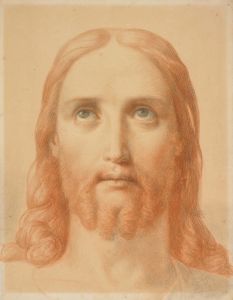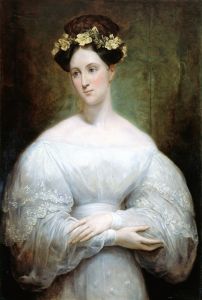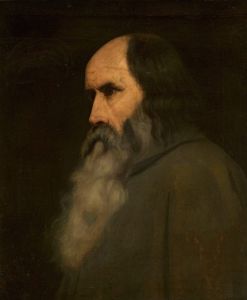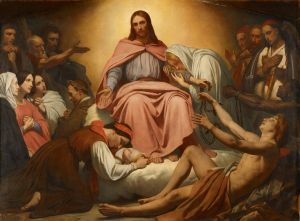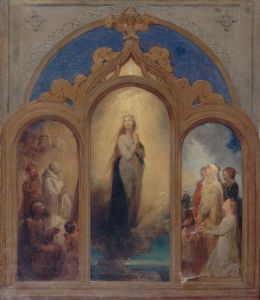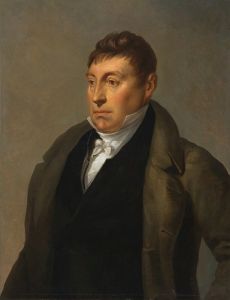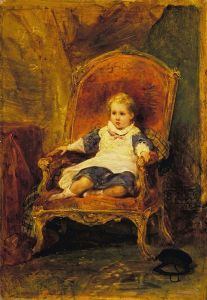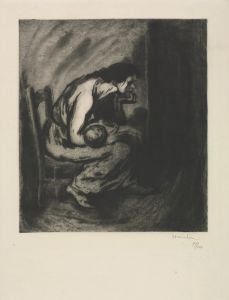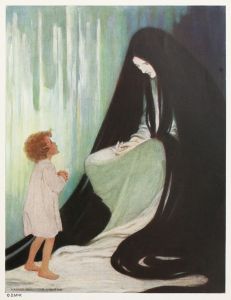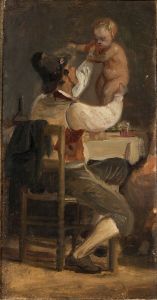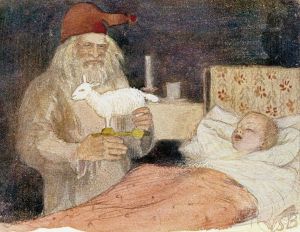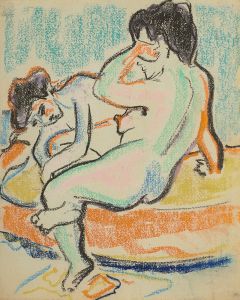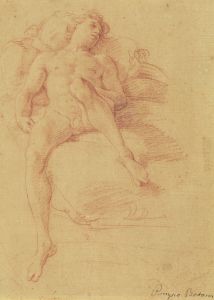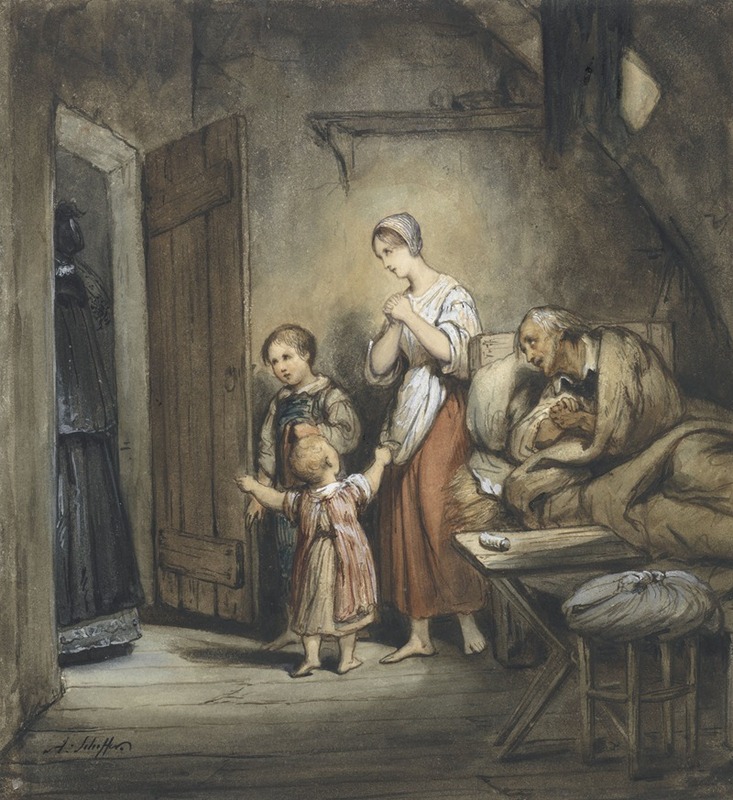
Zieke man in bed met naast hem een vrouw en twee kinderen
A hand-painted replica of Ary Scheffer’s masterpiece Zieke man in bed met naast hem een vrouw en twee kinderen, meticulously crafted by professional artists to capture the true essence of the original. Each piece is created with museum-quality canvas and rare mineral pigments, carefully painted by experienced artists with delicate brushstrokes and rich, layered colors to perfectly recreate the texture of the original artwork. Unlike machine-printed reproductions, this hand-painted version brings the painting to life, infused with the artist’s emotions and skill in every stroke. Whether for personal collection or home decoration, it instantly elevates the artistic atmosphere of any space.
Ary Scheffer's painting Zieke man in bed met naast hem een vrouw en twee kinderen (translated as Sick Man in Bed with a Woman and Two Children Beside Him) is a work attributed to the renowned 19th-century Dutch-French Romantic painter. Scheffer, born in Dordrecht in 1795 and later active in Paris, is best known for his emotionally evocative works that often explore themes of human suffering, love, and spirituality. This particular painting reflects his sensitivity to intimate and poignant domestic scenes.
The artwork depicts a bedridden man, visibly ill, with a woman and two children by his side. The composition conveys a sense of familial care and emotional gravity, characteristic of Scheffer's ability to capture human vulnerability. The subdued color palette and soft lighting enhance the somber mood of the scene, drawing attention to the emotional connection between the figures. The woman, possibly the man's wife, appears to be offering comfort, while the children stand nearby, their expressions reflecting concern or sadness. The painting's intimate setting and focus on personal tragedy align with the Romantic era's emphasis on individual emotion and the human condition.
Scheffer's works often drew inspiration from literature, religion, and personal experiences, though the specific context or inspiration for this painting is not documented. It is unclear whether the scene is based on a real-life event, a literary reference, or an allegorical representation. The painting demonstrates Scheffer's skill in portraying psychological depth and his interest in exploring themes of compassion and familial bonds.
Ary Scheffer was a prominent figure in the Romantic movement, and his works were widely admired during his lifetime. He was closely associated with the intellectual and artistic circles of his era, including figures such as Victor Hugo and George Sand. While Scheffer is perhaps best known for his larger, more dramatic works, such as Francesca da Rimini and Paolo Malatesta or Christus Consolator, his smaller, more intimate pieces, like Zieke man in bed met naast hem een vrouw en twee kinderen, reveal another dimension of his artistic range.
The painting is part of Scheffer's broader oeuvre, which often sought to evoke empathy and introspection in the viewer. Today, Ary Scheffer's works are held in various collections, including the Musée de la Vie Romantique in Paris, which is dedicated to his life and art. However, specific details about the provenance or current location of Zieke man in bed met naast hem een vrouw en twee kinderen are not widely available in public records.





